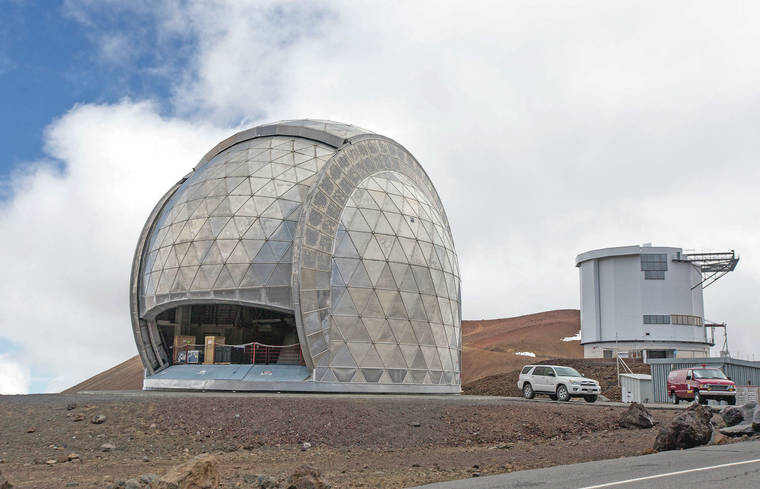The decommissioning process for one of five Maunakea telescopes to be removed in the coming decade remains on schedule after the approval last month of several environmental assessments.
At a December meeting of the Maunakea Management Board, members approved three analyses of the decommissioning process for the Caltech Submillimeter Observatory, one of five telescopes to be dismantled in exchange for permitting the construction of the Thirty Meter Telescope.
Doug Simons, board member and executive director of the Canada-France-Hawaii Telescope, said the three analyses — an archaeological assessment, a biological inventory and assessment, and a hydrogeological and geological evaluation — were approved without controversy.
The archaeological and geological studies found that the decommissioning process will cause next to no impacts to the archaeological and geological resources of the area. In particular, the latter study found “virtually no possibility” of the CSO cesspool impacting regional aquifers around the island, and no likelihood of the site impacting the nearby Lake Waiau, which is considered a spiritual place by Hawaiian cultural practitioners.
The biological assessment predicts that the decommissioning process will necessarily disturb local mosses, lichens and other plants, but adds that those species are too sparse at the summit for such disturbances to threaten their survivability as a whole. The study drew a similar conclusion about the process’ impact on local insects, and listed measures to prevent the introduction of invasive insects to the summit.
Simons said the submillimeter observatory remains on schedule to be removed by the end of 2021.
“Logically, you’d expect the process to be faster, but this is the first one of these we’ve done,” Simons said. “You’ve got to make sure you get it right, and review the process.
“The physical deconstruction will ultimately be relatively quick,” Simons added.
Part of the removal process involves a full site restoration — not only removing the structure itself but also filling its foundation and restoring the terrain to its original topography. Simons said such a project has never been done before at the summit.
“The idea would be that, by the end of next year, you wouldn’t even know there was a telescope here at all,” he said.
CSO is the second of five telescopes to be removed from the summit. The first, the University of Hawaii in Hilo’s 36-inch educational telescope Hoku Ke‘a, was removed in 2018, but the building that housed it on the summit remains.
The former Hoku Ke‘a site is also scheduled to be completely cleared by the end of 2021.
Despite some push-back from TMT opponents, some of whom believe all telescopes on the summit should be removed, Simons said he believes Halepohaku, located near the Maunakea Visitor Information Station, remains an ideal new location for the educational telescope.
“There’s already telescopes at the VIS of a similar aperture (to Hoku Ke‘a),” Simons said.
The United Kingdom Infrared Telescope is scheduled to be decommissioned by the end of 2024, while the fourth telescope, the Very Long Baseline Array, will be removed by the end of 2033.
The final site will be identified by the end of 2022.
Email Michael Brestovansky at mbrestovansky@hawaiitribune-herald.com.

